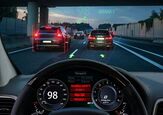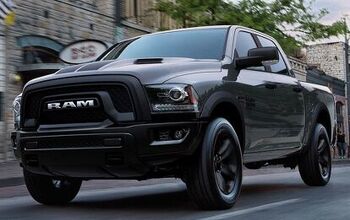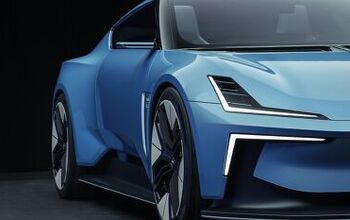Korean Carmaker Ssangyong Looks At US Market During A Dramatic Rebirth

Ssangyong has had a colorful history, to put it lightly. In 1999, the Korean brand entered bankruptcy as its Chinese majority owner, SAIC Motor Company cut Ssangyong loose. Ssangyong made a frenzied attempt to cut its workforce down, and faced one of the worst labor strikes in the Korean auto industry’s history. In retaliation for the cuts, the workers of Ssangyong’s Pyongtaek production plant set fire to the plant, and later occupied it for two months. Riot police, including helicopter support, was called in eventually to clear the plant.
With Ssangyong in shambles, Indian automaker Mahindra & Mahindra bought a 70% stake in the company in 2011 and immediately went to work on labor issues. Since the acquisition, Ssangyong has not suffered any labor downtime and the once rioting workforce now appears to be diligently rebuilding the auto maker, one car at a time.
In 2013, Ssangyong returned and racked up its highest sales, with 145,649 cars sold last year. 81,679 of those sales were made in overseas markets; and a spokesman for Ssangyong confirmed to WardsAuto that the Korean Automaker is looking to expand its product to the U.S. market.
The spokesman confirmed to Wards that a portfolio for North America is being planned with a consultant to help find an approach to the U.S., with the key being a friendly brand name. Aside from the odd-sounding name (to American eyes and ears, at least), Ssangyong looks to leave behind the battle torn image of the past, and exude a quality product.
Ssangyong’s President and CEO Yoo-il Lee has set high goals for 2016, and the U.S. market is a must if they intend to meet them, with a target of 300,000 vehicles by 2016.
But that’s about where the announced plan stops. As mentioned, with last year’s sales hovering just below 150,000, the “Promise 2016” plan intends to double that in a scant two years. With no product ready for U.S. emissions and safety and no dealer network, it’s a lofty goal. US dealers are still wary after Mahindra’s ongoing failure to bring their diesel pick to the US by 2010, and we’ll be impressed if Ssangyong can enter the U.S. market by their 2016 sales goal.

More by Phillip Thomas
Latest Car Reviews
Read moreLatest Product Reviews
Read moreRecent Comments
- V8fairy Not scared, but I would be reluctant to put my trust in it. The technology is just not quite there yet
- V8fairy Headlights that switch on/off with the ignition - similar to the requirement that Sweden has- lights must run any time the car is on.Definitely knobs and buttons, touchscreens should only be for navigation and phone mirroring and configuration of non essential items like stereo balance/ fade etc>Bagpipes for following too close.A following distance warning system - I'd be happy to see made mandatory. And bagpipes would be a good choice for this, so hard to put up with!ABS probably should be a mandatory requirementI personally would like to have blind spot monitoring, although should absolutely NOT be mandatory. Is there a blind spot monitoring kit that could be rerofitted to a 1980 Cadillac?
- IBx1 A manual transmission
- Bd2 All these inane posts (often referencing Hyundai, Kia) the past week are by "Anal" who has been using my handle, so just ignore them...
- 3-On-The-Tree I was disappointed that when I bought my 2002 Suzuki GSX1300R that the Europeans put a mandatory speed limiter on it from 197mph down to 186mph for the 2002 year U.S models.


































Comments
Join the conversation
@DM--I am doubtful about Ssangyong entering the US market. As soon as they would enter with a compact 4 door car Nissan would bring the Micra into the market and undercut them. Hyundai and Kia would have a lower price entry as well. Chevy would compete with a lower cost Daewoe as well. The Chinese could eventually enter the US but they might make vehicles for GM, Ford, Chrysler, Toyota, or Nissan before they enter on their own. Many potential franchisees would be wary of doing business with Ssangyong since it is owned by Mahindra. I do see a potential for a midsize diesel truck if it is priced right.
@Jeff S - Without consumer confidence, who cares how low the price is? Would you spend $30,000 for a hard loaded Korean truck that'll likely fall apart and be worth $800 retail in five years when the OEM leaves the US laughing? Of course you would... Why was anybody buying Corollas and Sentras when they could have bought a Daewoo or Daihatu at a huge savings and way more bang for your buck?